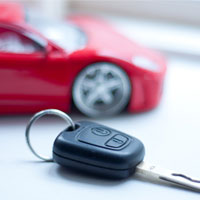Best 7 Methods to Save on Ford E150 Econoline Van Insurance in Las Vegas, NV

Las Vegas shoppers have options when shopping for the best price on Ford E150 Econoline Van insurance. They can either spend hours driving around to get rate comparisons or leverage the internet to compare rates.
There is a right way and a wrong way to shop for car insurance and we’ll show you the absolute fastest way to get price quotes on a Ford and get the lowest price.
How to Compare Car Insurance Quotes in Las Vegas, Nevada
There are a lot of ways you can shop for car insurance and some are more efficient than others. You could spend the better part of a day talking about coverages with insurance companies in Las Vegas, or you could save time and use the web to maximize your effort.
Many of the larger companies are enrolled in a marketplace where prospective buyers submit their information once, and at least one company then returns a price quote based on that information. This system prevents you from having to do form submissions to each company. To compare rates using this form now click here (opens in new window).
The single downside to comparing rates this way is buyers cannot specifically choose which insurance companies you will receive quotes from. If you would rather choose individual companies for rate comparison, we put together a list of low cost car insurance companies in Nevada. Click here for list of insurance companies in Nevada.
It doesn’t matter which method you choose, just make darn sure you compare apples-to-apples coverage limits and deductibles for each comparison quote. If your comparisons have unequal deductibles or liability limits you will not be able to determine the lowest rate for your Ford E150 Econoline Van in Las Vegas. Having just a slight variation in insurance coverages may result in large price differences. It’s important to know that comparing a large number of companies will enable you to find the best rates.
Do you qualify for a discount?
Insuring your fleet can be pricey, buy you may qualify for discounts to cut the cost considerably. Certain discounts will be triggered automatically at the time of purchase, but lesser-known reductions have to be asked about before you will receive the discount.
- Anti-lock Brakes – Anti-lock brake equipped vehicles can reduce accidents and earn discounts up to 10%.
- Safe Drivers – Drivers who avoid accidents can get discounts for up to 45% lower rates on E150 Econoline van insurance than less cautious drivers.
- Seat Belts Save – Drivers who require all occupants to buckle their seat belts could cut 10% or more off your medical payments premium.
- Own a Home – Owning a home in Las Vegas may earn you a small savings because maintaining a house shows financial diligence.
- Federal Government Employee – Active or retired federal employment can earn a discount up to 10% on E150 Econoline van insurance with a few car insurance companies.
- Sign Online – Some insurance companies will discount your bill up to fifty bucks just for signing your application online.
- Anti-theft Discount – Anti-theft and alarm systems prevent vehicle theft and qualify for as much as a 10% discount.
Keep in mind that some of the credits will not apply to the overall cost of the policy. Most only cut the price of certain insurance coverages like medical payments or collision. So despite the fact that it appears you would end up receiving a 100% discount, you’re out of luck. Any qualifying discounts will reduce your premiums.
To see a list of insurers with discount car insurance rates in Las Vegas, click here to view.
Car insurance is unique, just like you
When buying proper insurance coverage for your vehicles, there is no best way to insure your cars. Coverage needs to be tailored to your specific needs.
These are some specific questions might help in determining if your insurance needs will benefit from professional help.
- Is there coverage for injuries to my pets?
- Am I covered when pulling a rental trailer?
- Do I need rental car coverage?
- Is Nevada a no-fault state?
- I have good health insurance, so how much medical payments coverage do I need?
- Does my policy cover me when driving someone else’s vehicle?
- Are my friends covered when driving my Ford E150 Econoline Van?
- What is the minimum liability in Nevada?
- Does medical payments coverage apply to all occupants?
If it’s difficult to answer those questions but you think they might apply to your situation, you might consider talking to a licensed insurance agent. To find an agent in your area, simply complete this short form.
Coverage specifics
Knowing the specifics of a car insurance policy can be of help when determining which coverages you need and proper limits and deductibles. The terms used in a policy can be impossible to understand and even agents have difficulty translating policy wording.
Comprehensive car insurance – This coverage pays to fix your vehicle from damage that is not covered by collision coverage. A deductible will apply and the remainder of the damage will be paid by comprehensive coverage.
Comprehensive coverage protects against claims such as hail damage, rock chips in glass, vandalism, fire damage and damage from a tornado or hurricane. The highest amount you’ll receive from a claim is the actual cash value, so if the vehicle is not worth much it’s not worth carrying full coverage.
Coverage for medical expenses – Coverage for medical payments and/or PIP pay for expenses like prosthetic devices, doctor visits, ambulance fees and X-ray expenses. They are used to fill the gap from your health insurance policy or if you do not have health coverage. They cover not only the driver but also the vehicle occupants in addition to getting struck while a pedestrian. Personal Injury Protection is not an option in every state but it provides additional coverages not offered by medical payments coverage
Collision coverage – Collision insurance pays to fix your vehicle from damage from colliding with a stationary object or other vehicle. You have to pay a deductible then your collision coverage will kick in.
Collision coverage protects against claims like scraping a guard rail, sideswiping another vehicle, hitting a mailbox and crashing into a ditch. Paying for collision coverage can be pricey, so consider dropping it from vehicles that are older. Drivers also have the option to raise the deductible to bring the cost down.
Coverage for uninsured or underinsured drivers – Your UM/UIM coverage gives you protection when the “other guys” either are underinsured or have no liability coverage at all. This coverage pays for injuries sustained by your vehicle’s occupants as well as your vehicle’s damage.
Since a lot of drivers only purchase the least amount of liability that is required (15/30/10), it doesn’t take a major accident to exceed their coverage limits. For this reason, having high UM/UIM coverages is important protection for you and your family. Most of the time these coverages are identical to your policy’s liability coverage.
Auto liability insurance – Liability coverage will cover damage that occurs to other people or property that is your fault. It protects YOU against claims from other people. Liability doesn’t cover your own vehicle damage or injuries.
Coverage consists of three different limits, bodily injury for each person injured, bodily injury for the entire accident and a property damage limit. You might see policy limits of 25/50/25 that translate to a limit of $25,000 per injured person, a total of $50,000 of bodily injury coverage per accident, and a limit of $25,000 paid for damaged property. Some companies may use one number which is a combined single limit which provides one coverage limit with no separate limits for injury or property damage.
Liability insurance covers things like emergency aid, bail bonds and medical expenses. How much liability coverage do you need? That is a personal decision, but buy as large an amount as possible. Nevada state minimum liability requirements are 15,000/30,000/10,000 but drivers should carry higher limits.
Learn more today
More information is available on the Nevada Division of Insurance website found here. Consumers can read state legal mandates and laws, find disaster information, read industry bulletins, and discover disciplinary actions.
Other related articles:

